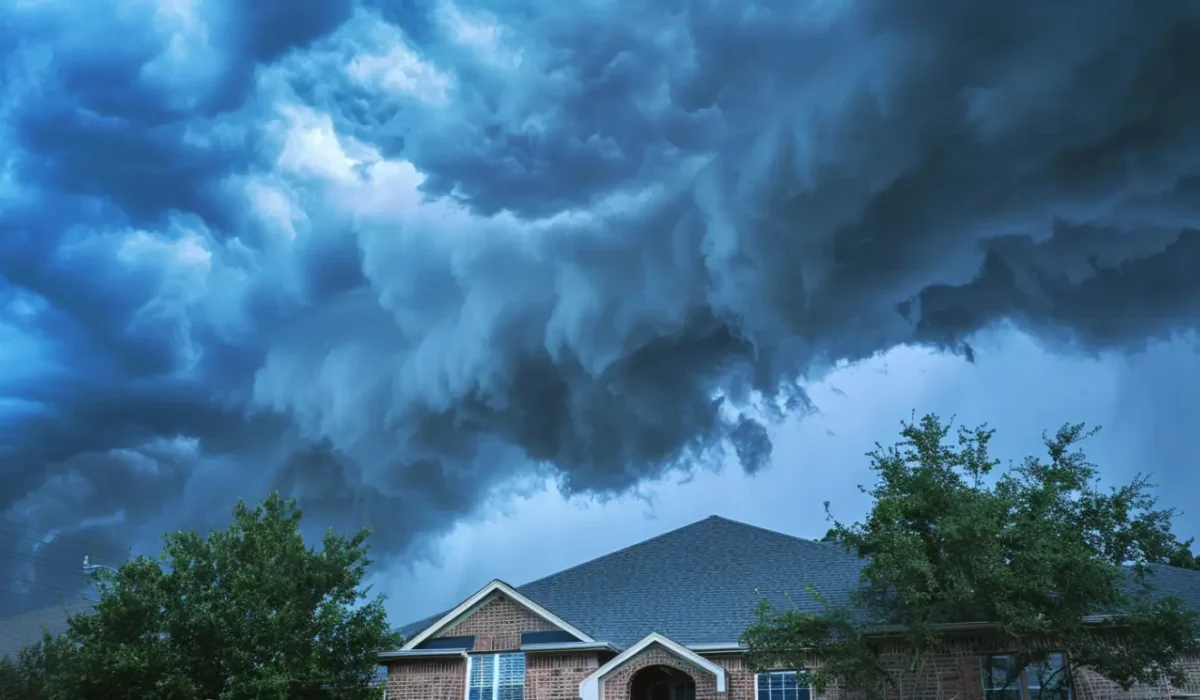Hailstorms are among the most damaging weather events your roof can face. In Texas, especially in areas like Grapevine, hail is a seasonal threat that can leave behind significant—but often subtle—damage. Homeowners frequently overlook or underestimate hail damage, which can lead to leaks, structural deterioration, and denied insurance claims down the line. Knowing what hail damage looks like and how to spot it early is crucial for protecting your home and avoiding costly repairs.
Why Hail Damage Isn’t Always Obvious
Unlike a missing shingle or a dripping ceiling, hail damage doesn’t always show itself in dramatic ways. The impact from hailstones can bruise or crack the shingle surface, weakening the material without immediately causing leaks. These “silent” issues may take months to surface, by which time water may already be infiltrating your attic or walls.
Roofing systems are layered, and when hail compromises even the top layer (usually the granules on asphalt shingles), the entire roof’s durability is affected. That’s why early identification and professional inspection are essential after any significant hail event.
Common Signs of Hail Damage on Your Roof
The most visible sign of hail damage is dislodged granules. After a storm, check your gutters and downspouts for small, sandy debris. These granules protect your shingles from UV rays and weathering; without them, the underlying asphalt deteriorates faster.
On the roof surface, you might see dark spots or small circular dents. These dents may be soft to the touch—indicating bruised shingles—or they may expose the black substrate beneath. Even a handful of these marks can lead to widespread issues if left unaddressed.
Other signs to watch for include:
- Cracked or split shingles
- Torn or creased shingle tabs
- Exposed fiberglass or matting
- Dented flashing or roof vents
- Marks on metal roof components or gutter systems
Keep in mind that hail can damage more than just your roofing materials. Check skylights, siding, gutters, and even outdoor furniture for signs of impact. If these items show hail damage, there’s a strong chance your roof was affected too.
Signs of Interior Water Damage from Hail
Sometimes the first clue of hail damage shows up inside your home. Water stains on ceilings, peeling paint, and mold or mildew growth in corners or attics may all stem from hail-related leaks. These problems often appear weeks or months after a storm, once water has penetrated through weakened shingles or flashing.
If your attic has insulation, inspect it periodically for dampness or mold. Wet insulation loses its effectiveness and creates a breeding ground for rot and bacteria—another reason early roof repair is essential.
When to Schedule a Roof Inspection
After a hailstorm, don’t wait for obvious leaks to occur. It’s wise to schedule a roof inspection within a few days of the event. Even if you can’t see damage from the ground, a trained roofing contractor can assess the full extent of the impact. Professionals have the tools and experience to detect subtle bruising, damaged flashing, and compromised sealant lines.
KangaRoof in Grapevine, TX provides thorough post-storm evaluations, helping homeowners document damage for insurance claims and prevent future complications. With top-tier certifications like OC Preferred Contractor and CertainTeed Master Shingle Applicator, their team is equipped to assess and repair hail damage to the highest industry standards.
What to Expect in the Insurance Process
Documenting hail damage is key to a successful insurance claim. Take photos of visible damage, make a note of the storm date, and save any local weather alerts. A professional roofer can help you identify all impacted areas and assist with insurance documentation.
Avoid attempting repairs yourself before filing a claim, as insurers may require a full inspection of the existing damage. Keep in mind that some policies may limit how long you have to file a claim after a storm—another reason not to delay.
Preventing Future Hail Damage
While you can’t prevent hailstorms, you can reduce the risk of severe damage by upgrading to impact-resistant roofing materials. Class 4 shingles, for example, are specifically designed to withstand high-velocity impacts and may even qualify you for insurance discounts.
Brands like Owens Corning offer high-performance roofing systems built to handle the extreme weather conditions common in Texas. Reinforced sealants, improved underlayments, and proper installation by certified professionals can significantly boost your roof’s ability to weather the storm—literally.
Final Thoughts
Hail damage might not always be easy to spot, but its effects can be far-reaching if ignored. Knowing what to look for, acting quickly, and working with a reliable contractor can make all the difference between a minor repair and a full roof replacement. If your home has recently endured a hailstorm, don’t assume everything’s fine—get it checked.
Read also our blog: Roofing Maintenance Tips to Prolong Your Roof’s Life
